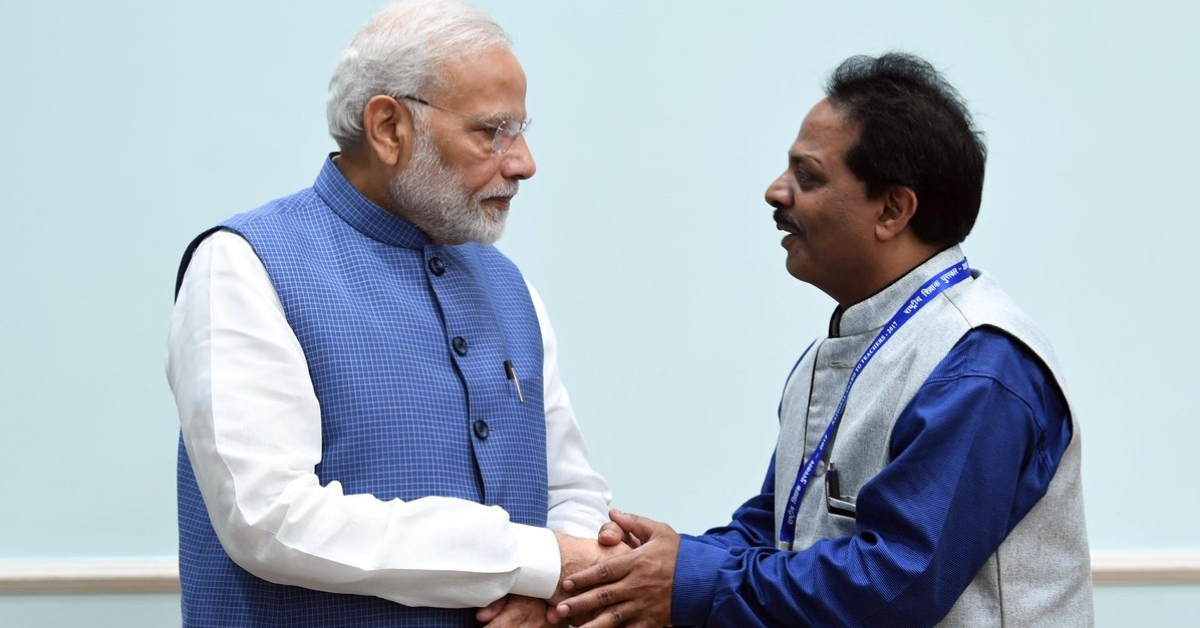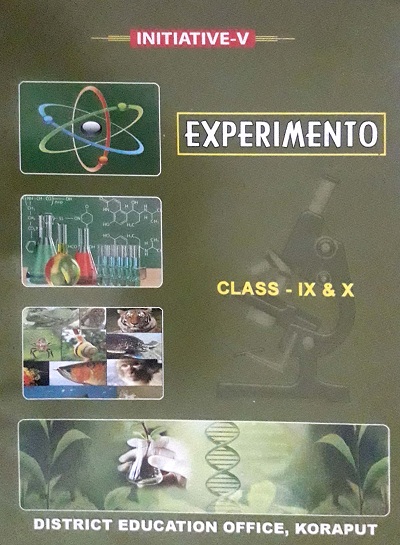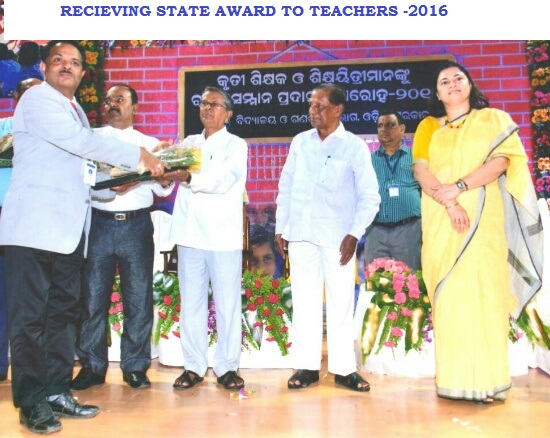Exclusive: Odisha Teacher Fights for 20 Years To Give All Kids The Education They Deserve
From arriving in his first posting in a government school in the remote district of Koraput and finding only two students in 1998, to winning the best teacher award at the district, state, and national level - it has been a long journey for Mishra.

Anyone can learn from a book. But a #TerrificTeacher can make the difference between passing an exam and learning a life lesson. The Better India salutes those for whom teaching is not a job but a higher calling.
“Growing up, I always wanted to be a teacher. I had observed the respect a teacher commands. No matter what post an individual is, whether the Prime Minister, President, IAS or IPS officer, the only people he bows down to after his parents are his/her teachers. That is the power of teaching,” says Odisha-based teacher, Omprakash Mishra, who won the national award by the Prime Minister, two days ago.
From arriving in his first posting in a government school in the remote district of Koraput and finding only two students in 1998, to winning the best teacher award at the district, state, and national level – it has been a long journey for Mishra.
He was born in the remote village of Kajuripada, where he studied in an Odia medium Govt school until his family shifted to Bhubaneshwar. Om moved on to complete his MSc, MEd and MPhil in tribal studies and even cleared the competitive UGC NET.
Currently pursuing his PhD, he serves as the headmaster of the Zilla Parishad, Govt High school of Jeypore. However, this two-decade-long journey into teaching began in 1998.

When he first reported as the Govt-appointment teacher to Koraput’s Deopur Govt high school, the tribal village was remote. Lacking basic infrastructure, it was cut off from the rest of the country.
“I was young and energetic. Had a lot of knowledge about education and was hyped to transform the system. But when I reported to the school, to my shock, only two students greeted me. When I enquired with the headmaster he said, the total strength of the school was only 27 students. And since it was the harvesting season, students skipped school to help their parents in the fields. ‘After 20 days you will get about 20 students,’ he said. I was gutted.”
The school had an infamous reputation and since its inception in 1993, hadn’t seen a single student clear matriculation (Class 10).
But Om wasn’t deterred. He took the two students home and adopted them in terms of all their requirements ranging from food, shelter to education. To his credit, under his guidance, the village got its first matriculate. The story even made it to the local newspaper.
“It was a very proud moment for me,” he beams.
His continued efforts for successful results paired with community mobilisation helped increase the enrollment of students in the school from a meagre 27 to 178 over the next five years.
“The villagers had finally begun to realise the importance of education and how crucial it was to help turn around the lives of their children,” he adds.
It was only a matter of time, until his students got selected for the state level science exhibition, and became part of the national children’s science congress, representing the school in different metro cities.
Impressed by his efforts, the District Education Officer transferred Om in 2006 to the biggest Zilla Parishad school in the district – the Govt High School, Jeypore. A century-old institution, he was given the tremendous responsibility of improving the state of education.
“When I was posted to these tribal schools I realised how many secondary school teachers would say they struggle with teaching science because their schools lack science labs, apparatus, and equipment. But I have always felt that one cannot make science relatable to tribal students until the topics a teacher is trying to tackle in class is explained in the context of what they see in their day to day lives.”
So he penned a science practical book titled ‘Experimento’ in 2015 for the entire district – which illustrates every science experiment in the syllabus and helps teachers replicate them in class for students with locally available and cheap resources.
Read More: These 8 Amazing Teachers Are Going The Extra Mile to Make India’s Tomorrow Better!
The handbook was explained to over 280 headmasters and science teachers across the district in an orientation conducted by Om. The handbook continues to be a major hit among students and teachers alike.

He also wrote a 40-day module practice book ‘Kinetics’ to help the students in clearing the national means-cum-merit scholarship (NMMS) test, which is conducted for Class 8 students, whose parents have an annual income less than 1.5 lac. Those who clear the exam, get Rs 500 per month.
“The amount is huge for a tribal student, it is no joke. The 40-day module is easy to follow and doesn’t give any student homework. All teachers have to do is take one hour out of regular school hours and teach those concepts to the students. You see the magic happening. Money and equipment are not important, what is required is the commitment and dedication of the teacher. That is the only thing that can help tribal students,” says Om.
Today the number of NMMS awardees is only growing in the district.
He was moved by the sorry state of primary education when he realised students in Class 8 and 9 lacked understanding of fundamental concepts like addition, subtraction, multiplication or division. And often secondary teachers blamed their primary counterparts, who remain absent in the formative years in school for it. And so he co-authored Transit 1 for Class 8 and Transit 2 for Class 9, which helps students clear basic fundamental concepts during school hours, over a period of 60 days.
“Once these concepts are ingrained, at least the students will be able to understand and retain the what they are taught in their current higher class syllabus,” he says.
Until 2014, the number of students scoring over 90% in the district was a meagre three.
Om intervened by conducting the Prativa programme. Sponsored by the community itself and held in Om’s school, this programme helped students adopt study techniques, learn time and stress management, emphasised the importance of good sleep schedules during exams etc.
The impact of the programme reflected in how the number of students scoring above 90 rose to 27 in 2015 and 32 in 2016.
The teacher was felicitated with the best district teacher award in 2015 and the best state teacher award in 2016.

Recently he became the only teacher from Odisha to be selected among 45 teachers to win the national award for 2017 by the Prime Minister.
“I never did anything for the awards. But this felicitation is a great source of inspiration for many other teachers who want to go the extra mile to transform the lives of tribal students in remote districts through their work and me. I believe that a teacher’s life should be like that of a sage. Giving to the society without expecting any rewards. A teacher could be highly educated, but his qualifications are a waste if he cannot accommodate himself and his teaching methods to the needs of his students. He/She cannot demand respect. Instead, their work must command respect,” he says, signing off.
If this story inspired you get in touch with Omprakash Mishra at [email protected]
(Edited By Vinayak Hegde)
Like this story? Or have something to share?
Write to us: [email protected]
Connect with us on Facebook and Twitter.

Similar Story

‘I Had Decided to Drop Out of IIT Entrance Exams, Until My Dad’s Words Changed My Life’
Ganesh Balakrishnan’s life took a turn when he faced health issues a month before his IIT-JEE exam. Despite feeling disheartened and at the verge of dropping out, his father’s advice helped him overturn his luck.
Read more >
If you found our stories insightful, informative, or even just enjoyable, we invite you to consider making a voluntary payment to support the work we do at The Better India. Your contribution helps us continue producing quality content that educates, inspires, and drives positive change.
Choose one of the payment options below for your contribution-
By paying for the stories you value, you directly contribute to sustaining our efforts focused on making a difference in the world. Together, let's ensure that impactful stories continue to be told and shared, enriching lives and communities alike.
Thank you for your support. Here are some frequently asked questions you might find helpful to know why you are contributing?


This story made me
-
97
-
121
-
89
-
167












